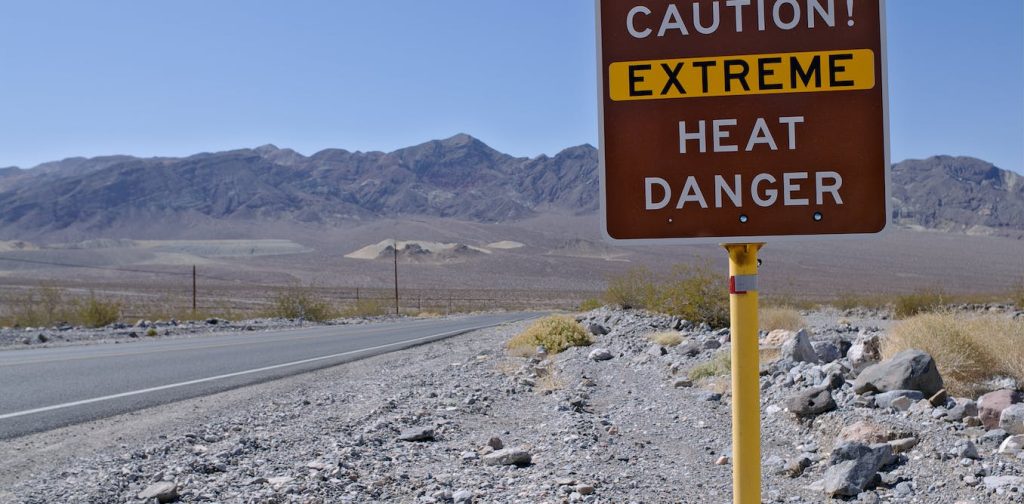Most of us have felt either too hot or too cold at some point in our lives. Depending on where we live, we may feel too cold quite often each winter, and too hot for a few days in summer. As we’re writing this in late January 2023 many southern Africans are probably feeling very hot and fatigued; a prolonged regional heatwave began around 9 January.
Being too hot isn’t just uncomfortable. Heat stress causes dehydration, headaches, nausea – and, when people are exposed to high temperatures for protracted periods, they risk severe health outcomes and could even die. For instance, at least five people working on farms in South Africa’s Northern Cape province have died from heat stroke in January. At least 90 people died in India and Pakistan in May 2022 during a devastating heatwave.
The situation is only going to get worse. The United Nations’ Intergovernmental Panel on Climate Change warns that “globally, the percentage of the population exposed to deadly heat stress is projected to increase from today’s 30% to 48%-76% by the end of the century, depending on future warming levels and location”.
We wanted to create a detailed picture of when and where heat stress occurs in southern Africa. By applying a global gridded dataset of a human thermal comfort index, we found that there has been a consistent change in thermal comfort – the human body’s experience of the outdoor thermal environment – from the 1970s to today. Simply put, southern Africans are experiencing heat stress more often than in 1979.
Given that global temperatures are set to rise in the coming years and decades, these findings are worrying. Warmer temperatures will mean that regions that were classified as having “favourable” thermal comfort will more regularly be classified as regions of “thermal stress”. Heatwaves have been projected to occur more frequently, and to be more intense.
Measuring thermal comfort (or stress)
Over the past two decades, scientists from across the world have developed the Universal Thermal Climate Index. It has advanced our ability to model human thermal comfort levels, ranging from cold stress to heat stress. Earlier thermal comfort indices typically only modelled heat stress because they mainly measured the combined effects of humidity and temperature to calculate an equivalent temperature.
This equivalent temperature would essentially measure how we feel in relation to the surrounding environment. For example, at 5pm on 23 January, Johannesburg’s outdoor air temperature was 29˚C; relative humidity was 30%; the sky was clear and there was a gentle breeze of 16km/h.
For someone outside, the equivalent temperature would have been slightly higher than the outdoor temperature (possibly as high as 32˚C), largely due to the effect of relative humidity and limited wind chill.
The Universal Thermal Climate Index considers a wider range of factors that influence thermal comfort than its predecessors. In addition to air temperature, relative humidity and wind speed, it also includes radiant heat, a measure of how hot we feel when standing in the sun rather than in the shade.
The index is built for humans navigating the real world: it includes a clothing model and an exertion model.
During the current southern African heatwave, for instance, the model assumes that nobody is dressed in a fuzzy jersey. In winter, it assumes nobody in countries like Namibia, Botswana, Zimbabwe, Mozambique, Eswatini, Lesotho and South Africa is wearing shorts and a T-shirt.
Ultimately, the inclusion of all these factors means that the Universal Thermal Climate Index is a more accurate and realistic indicator of the level of thermal comfort (or discomfort) perceived by the human body.
Southern African application
To apply the Universal Thermal Climate Index to southern Africa, we drew data from the ERA5-HEAT data collection, which provides an hourly dataset, of the equivalent temperature derived from the index, for 1940 to present; it is produced by the European Centre for Medium-Range Weather Forecasts.
We zoomed into the time period 1979-2021 and considered thermal comfort at annual, seasonal and monthly scales. Over these scales, we calculated the average climatology, and investigated changes and year-to-year variability patterns in day-time, night-time and daily average equivalent temperatures across southern Africa.
We found that heat stress occurs most widely during the summer months (December to March); cold stress occurs mainly during the winter months (June to August). Heat stress was, as one would expect, most common during the day and cold stress more common at night.
Drilling further into the data, we discovered that, from September to March, more than 85% of the subcontinent experiences day-time heat stress. Over parts of the Northern Cape in South Africa, Namibia, Botswana, Zimbabwe and Mozambique, day-time heat stress can reach very strong, and potentially dangerous, heat stress levels during these months.
From May to August, our results showed that more than 80% of southern Africa experiences night-time cold stress, and over much of South Africa night-time cold stress can reach moderate cold stress. In short, it’s unusual for people in the region to feel extremely cold and fairly common in certain months to feel extremely hot, especially outside.
Going forward: why it’s bad news
Everyone in southern Africa is at risk of heat stress. But children, the elderly, and those with underlying comorbidities are more vulnerable.
Those working outdoors, like farm and construction workers, are especially vulnerable because there’s little that can be done to adapt to and cope with heat stress while working outdoors during the day-time. Adjusting work hours to avoid peak heat hours is one measure that could be applied.
There are also some coping mechanisms you could apply in your daily life. Limit your exposure to the sun by moving to shade or indoors to a well-ventilated or air-conditioned room. Keep hydrated (with water), avoid strenuous activities (like sports or excessive manual labour), wear lightweight protective clothing, a hat and sunblock, and, if you feel ill, seek medical attention.

